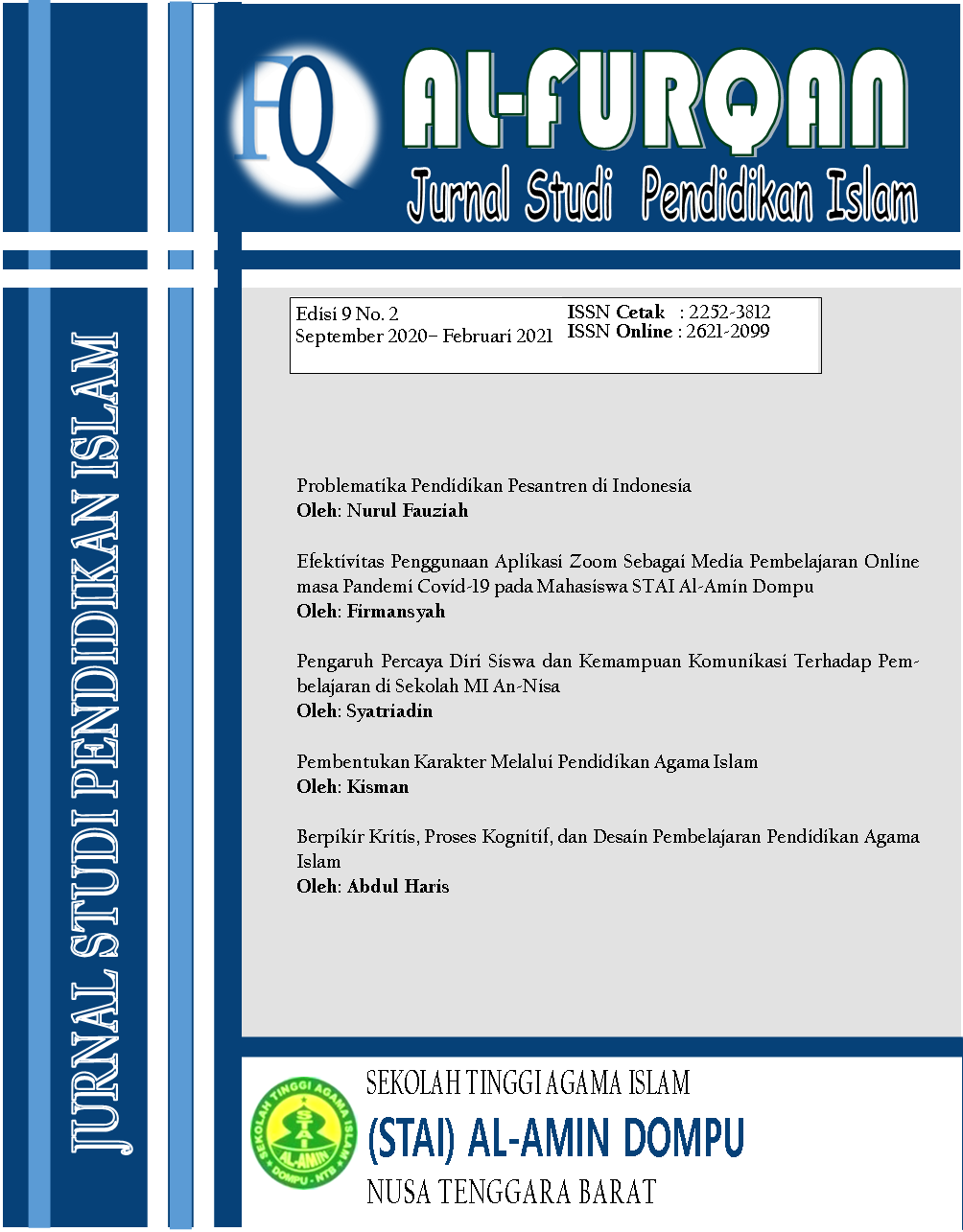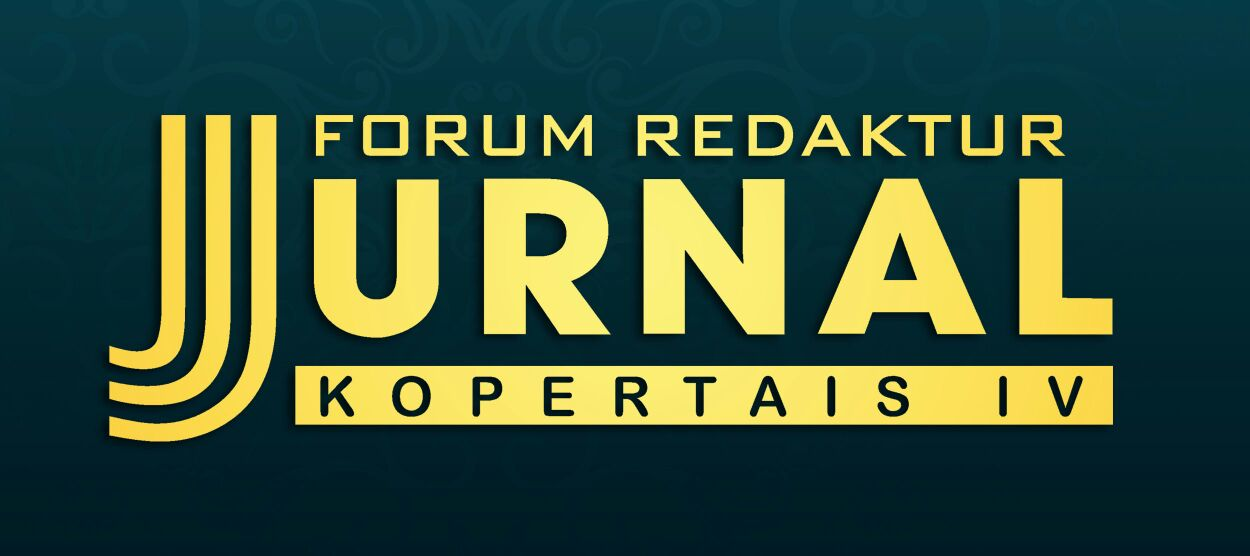The Influence of Student Confidence and Communication Skills on Learning at MI An-Nisa School
Keywords:
Self-confidence, communication skills, learning
Abstract
Educational communication is a process of interaction in learning activities, where students can convey ideas both orally and in writing which includes reading, listening, discussion, explaining, writing, interpreting, and evaluating ideas, symbols, terms, and information. Apart from that, the symbol of self-confidence is the most important basic asset in a person to be able to actualize himself. Judging from the process, education is one part of communication and as a process involving two components consisting of humans, namely teachers as communicators and students as communicants. A common reason people join small groups is to learn from others. In general, education takes place in a planned way in the classroom face to face (face to face), because the groups are small and there is communication in the form of group communication but at any time it can turn into interpersonal communication. Based on several descriptions of self-confidence, it can be concluded that self-confidence is a belief and attitude that students have about their abilities and can develop and cultivate themselves in overcoming various kinds of problems, both positive and negative. Likewise, with communication here, it can be concluded that this communication is a process of interaction in learning activities, where later students can convey ideas to one another by reading, listening, and writingReferences
Abudin Nata, 2014, Ilmu Pendidikan, Jakarta : Kencana
Abdurahman, M, 1999, Pendidikan Bagi Anak Berkesulitan Belajar, Jakarta : Rineka Cipta.
Arni Muhammad, 2000:183, Komunikasi Pendidikan, Jakarta Indonesia.
Alfabeta Tilaar, 1999. Pendidikan kebudayaan, dan masyarakat madani Indonesia. Bandung: PT Remaja Rosdakarya.
Deway, John, 2004. Experience and Education filsafat pendidikan john dewey, Bandung: Mizan.
Depdiknas, 2004, Materi Pelatihan Terintegrasi IPS Terpadu, Jakarta : Depdiknas.
Harahap, Poerbahawatja, 1982. Ensiklopedi Pendidikan. Jakarta: PT Gunung Agung.
Hasbullah, 2001. Dasar- dasar ilmu Pendidikan. Jakarta: Rajawali Pers.
Ibrahim Amini, (2014), Agar Tak Salah Mendidik, Bandung : Bumi Aksara.
James dalam Saraswati, 2014, Kepercayaan Diri, Surabaya : Insan Cendekia.
Jemmars. Mudyahardjo, 2002. Filsafat Ilmu Pendidikan. Bandung:
Kamus Besar Bahasa Indonesia. Jakarta: Balai Pustaka.
Mahardika, 2014, Komunikasi Pendidikan, Jakarta : Bumi Aksara.
Miarso Yusufhadi, 1986. Definisi Teknologi Pendidikan. Jakarta: Rajawali Pers.
Miarso, 2007. Menyemai benih teknologi pendidikan. Jakarta: Pustekom Diknas.
Mizan Nasution.1987. Teknologi Pendidikan. Bandung:
Naisbitt, 2002. High tech high touch. Bandung:
Onong Uchjama, 1999:11, Proses Komunikasi, Surabaya : Penerbit SIC.
Remaja Rosdakarya. Salim, 1985. Then Contemporary English- Indonesia dictionary. Jakarta: Modern English Pers.
Sudirman AM, 2005, Interaksi dan Motivasi dalam Proses Belajar Mengajar. Malang : Bumi Aksara.
Saliman, Sudharsono. 1993. Kamus Pendidikan Pengajaran dan Umum. Jakarta: Rineka Cipta.
Seels, Richey. 1994. Teknologi Pendidikan definisi dan kawasannya. Jakarta: UNJ
Sutisna, 2010, Kelebihan dan Kelemahan Belajar Dengan Pendekatan Problem Posing, (Online), Tersedia:http://Sutisna.com/artikel/artikel-kependidikan/kelebihan dan kelemahan-pembelajaran-dengan-pendekatan-problem-posing.
Suyitno, Amin, 2004, Pemilihan Model Pembelajaran dan Penerapan di Sekolah. Makalah pelatihan Bintek Guru-guru SMP. Semarang : Dinas Pendidikan Propinsi Jawa Tengah.
_______, 2003. UU RI No 20 tahun 2003 tentang Sistem Pendidikan Nasional, Jakarta: Departemen Pendidikan Nasional.
______, 1989. UU RI No 2 tahun 1989 tentang Sistem Pendidikan Nasional, Semarang: Aneka Ilmu.
Abdurahman, M, 1999, Pendidikan Bagi Anak Berkesulitan Belajar, Jakarta : Rineka Cipta.
Arni Muhammad, 2000:183, Komunikasi Pendidikan, Jakarta Indonesia.
Alfabeta Tilaar, 1999. Pendidikan kebudayaan, dan masyarakat madani Indonesia. Bandung: PT Remaja Rosdakarya.
Deway, John, 2004. Experience and Education filsafat pendidikan john dewey, Bandung: Mizan.
Depdiknas, 2004, Materi Pelatihan Terintegrasi IPS Terpadu, Jakarta : Depdiknas.
Harahap, Poerbahawatja, 1982. Ensiklopedi Pendidikan. Jakarta: PT Gunung Agung.
Hasbullah, 2001. Dasar- dasar ilmu Pendidikan. Jakarta: Rajawali Pers.
Ibrahim Amini, (2014), Agar Tak Salah Mendidik, Bandung : Bumi Aksara.
James dalam Saraswati, 2014, Kepercayaan Diri, Surabaya : Insan Cendekia.
Jemmars. Mudyahardjo, 2002. Filsafat Ilmu Pendidikan. Bandung:
Kamus Besar Bahasa Indonesia. Jakarta: Balai Pustaka.
Mahardika, 2014, Komunikasi Pendidikan, Jakarta : Bumi Aksara.
Miarso Yusufhadi, 1986. Definisi Teknologi Pendidikan. Jakarta: Rajawali Pers.
Miarso, 2007. Menyemai benih teknologi pendidikan. Jakarta: Pustekom Diknas.
Mizan Nasution.1987. Teknologi Pendidikan. Bandung:
Naisbitt, 2002. High tech high touch. Bandung:
Onong Uchjama, 1999:11, Proses Komunikasi, Surabaya : Penerbit SIC.
Remaja Rosdakarya. Salim, 1985. Then Contemporary English- Indonesia dictionary. Jakarta: Modern English Pers.
Sudirman AM, 2005, Interaksi dan Motivasi dalam Proses Belajar Mengajar. Malang : Bumi Aksara.
Saliman, Sudharsono. 1993. Kamus Pendidikan Pengajaran dan Umum. Jakarta: Rineka Cipta.
Seels, Richey. 1994. Teknologi Pendidikan definisi dan kawasannya. Jakarta: UNJ
Sutisna, 2010, Kelebihan dan Kelemahan Belajar Dengan Pendekatan Problem Posing, (Online), Tersedia:http://Sutisna.com/artikel/artikel-kependidikan/kelebihan dan kelemahan-pembelajaran-dengan-pendekatan-problem-posing.
Suyitno, Amin, 2004, Pemilihan Model Pembelajaran dan Penerapan di Sekolah. Makalah pelatihan Bintek Guru-guru SMP. Semarang : Dinas Pendidikan Propinsi Jawa Tengah.
_______, 2003. UU RI No 20 tahun 2003 tentang Sistem Pendidikan Nasional, Jakarta: Departemen Pendidikan Nasional.
______, 1989. UU RI No 2 tahun 1989 tentang Sistem Pendidikan Nasional, Semarang: Aneka Ilmu.
Published
2021-02-24
How to Cite
SYATRIADIN, S. The Influence of Student Confidence and Communication Skills on Learning at MI An-Nisa School. AL-FURQAN, v. 9, n. 2, p. 19-32, 24 Feb. 2021.
Section
Articles
Copyright (c) 2021 AL-FURQAN

This work is licensed under a Creative Commons Attribution-NonCommercial-NoDerivatives 4.0 International License.






